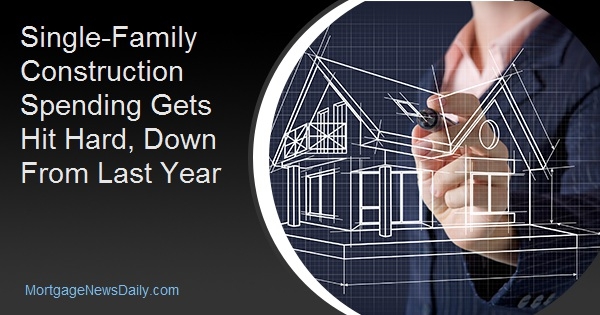Construction spending in May, dipping 0.8 percent compared to April's seasonally adjusted annual rate of $1.304 trillion to $1.294 trillion. On an annual basis, overall spending is down 2.3 percent on an annual basis and residential spending is off 11.2 percent.
On an unadjusted basis, there was a total of $113.03 billion spent during the month and $498.89 has been spent for the year-to date (YTD). This is 0.3 percent less than was spent to the same point last year.
Privately funded spending posted an 0.7 percent decline from April and is off the May 2018 pace by 6.3 percent. Total spending in May was at a seasonally adjusted rate of $953.24 billion and $83.55 billion on an unadjusted basis. YTD spending for all private construction was $380.03 billion compared to $393.94 billion for the first five months of 2018. This is a decline of 3.5 percent.
Residential spending was particularly hard hit, dipping 0.6 percent from April to a seasonally adjusted annual $498.95 billion, putting it 11.2 percent lower than the $561.94 in annual spending in April of 2018. Single-family construction expenditures are down 7.6 percent year-over-year, while spending on multifamily construction rose 9.3 percent.
On a non-adjusted basis there was $44.67 billion spent on residential construction compared to $42.35 billion in March, but YTD spending (at $196.25 billion) is 8.2 percent lower than during the same period last year. Single-family construction expenditures totaled $22.79 billion in May and multi-family spending was at an unadjusted $5.69 billion. The remaining residential construction spending is assumed to be expenditures for by remodeling and renovations to existing residential structures. The Census Bureau does not break those out in this report. So far this year spending on single-family spending is down 6.5 percent from the 2018 YTD total while multifamily construction is 8.9 percent higher.
Publicly funded construction is up 10.8 percent for the year at an annual rate of $340.64 billion. This, however, was 0.9 less than the rate in March. Residential Spending was down 1.1 percent at $6.41 billion, a 6.7 percent decline year-over-year and is 6.4 percent lower YTD.







